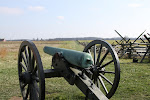My grandmother never threw away anything. Not that she was a hoarder. She kept a
simple, clean home without trails meandering through mountains of newspapers,
mystery boxes, and other paraphernalia typically associated with a hoarder. No,
she never discarded anything because she had so little and what she had might be
needed again. Bacon grease was saved for frying. Potted plants received coffee
grounds as fertilizer. She made her own quilts from scraps of cloth, cooked
everything from scratch, and maintained her own milk cow and chickens until she
could no longer care for them.
If I held the refrigerator door open too long,
she reminded me the escaping cool air cost her money. I didn’t dare leave on a
light as I left a room. She bought cattle feed in colorful cloth sacks that
served as material to make dresses.
Grandmother was the most frugal person I’ve
ever known.
So I was not surprised while cleaning out her house after her death
in 1982, we discovered her World War II ration book. I don't know if Grandmother
assumed rationing would return and she would need ration coupons again or if she
kept the book as a memento of those hard times.
As I examined the ration book, I could not help but think about her difficult
life through the Great Depression and World War II. When America entered the war
in 1941, Grandmother was raising my mother and my two uncles, the three ranging
in age from four to eight. Rationing only exacerbated a trying family situation.
Frugality was a product of necessity through much of her life.
WWII caused
shortages of manufactured materials, including metal, rubber, and clothing. But
food shortages affected everyone. With markets around the world inaccessible,
imported foods like coffee and sugar were unavailable in quantity. Much of the
processed and canned food was reserved for shipping overseas to the military and
our allies. Food transportation across America was limited by gasoline and tire
rationing and the priority of transporting soldiers and war supplies.
Because of
these shortages, the federal Office of Price Administration established a
rationing system to manage the distribution of foods in short supply. The OPA
established 8,000 ration boards across the country to administer the program.
Every American received a series of ration books containing coupons necessary
for buying rationed items like sugar, meat, canned goods, and cooking oil. When
new ration books were available, Claiborne Parish residents picked them up at
distribution points set up in Homer, Haynesville, and other communities.
A
rationed item could not be obtained without giving the retailer the appropriate
ration stamp. Once a person depleted the ration stamps for a specific item for
the month, no more could be purchased. Meals were planned with care, utilizing
creative menus, and avoiding waste.
Citizens found innovative ways to compensate
for the shortages. When a car owner could not obtain a new tire, one might be
fabricated from wood. People were encouraged to grow “Victory Gardens” in their
backyards to supplement the food supply and contribute to the war effort. Some
items like nylon hose were difficult to come by. In January 1943, Gibson’s
Quality Merchandise of Homer, Louisiana advertised it would
have 42 pair of nylon hose for sale in February. Customers were advised to sign
up quickly to reserve a pair.
Coffee rationing began in November 1942 with every
person over 15 allowed one pound every five weeks. One news report revealed,
“One pound every five weeks will be allowed for every person…This works out to
slightly more than one cup a day, and in households where children 15 or older
do not drink coffee, the grownups can have the children’s share as well as their
own.”
“Coffee stretchers,” concoctions added to coffee to make it go further,
ranged from pure chicory to a cereal blend containing chick peas, barley and
malt. While some were homemade using acorns or grains, commercially-prepared
substitutes like Postum—a wheat, bran, and molasses blend—and Happy Jack were
available.
Americans supported the war effort and endured the shortages but
coffee rationing was very unpopular. On July 28, 1943, President Roosevelt
announced it was ending, the first of the rationed items to come off the
rationing list. Most wartime food rationing ended in November 1945.
Holidays
like Thanksgiving were quite different on the home front during wartime. The
traditional turkey centerpiece was but impossible to acquire. Even Thanksgiving
football was suspended. The Detroit Lions, who have hosted an annual
Thanksgiving game since 1934, put the tradition on hold between 1939 and 1944.
The privations and inconveniences endured by those back home hardly compared to
those in the service overseas or the suffering and starvation experienced in
war-torn countries. Those years, however, influenced how the people who
struggled through them would live the rest of their lives.















No comments:
Post a Comment